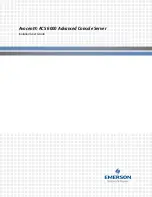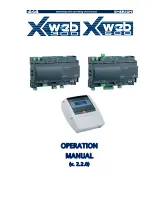
Note:
IEEE 802.1p tagging increases the size of the packets it tags. Some hubs and
switches will not recognize the larger packets and will drop them. Check
your hub or switch documentation to see if they support 802.1p. (You can
configure the switch to strip the tags from the packets and send it on to the
next destination as normal traffic). If these devices do not support 802.1p or
if you are not sure, use High Priority Queue (HPQ) to prioritize network
traffic.
The requirements for effectively using IEEE 802.1p tagging are:
v
The other devices receiving and routing 802.1p tagged packets must support
802.1p.
v
The adapters on these devices must support 802.1p. The Ethernet controller in
your computer, all IBM Netfinity 10/100 Ethernet Security Adapters, and IBM
10/100 Ethernet Server Adapters support 802.1p.
v
The adapter cannot be assigned to an adapter team.
v
If you are setting up VLANs and packet tagging on the same adapter,
802.1p/802.1Q Tagging must be enabled on the PROSet Advanced tab.
If your network infrastructure devices do not support IEEE 802.1p or you are not
sure, you can still define filters and send packets as high priority. While High
Priority Queue (HPQ) does not provide the precise priority levels of 802.1p
tagging, it does assign traffic as either high or low priority and sends high priority
packets first. Therefore, if there are multiple applications on a system sending
packets, the packets from the application with a filter are sent out first. HPQ does
not change network routing, nor does it add any information to the packets.
To assign HPQ, you can specify it using Priority Packet when you create or assign
a filter.
To effectively use HPQ, the adapter cannot be assigned to an adapter team.
Virtual LAN Mode:
A virtual LAN (VLAN) is a logical grouping of network
devices put together as a LAN, regardless of their physical grouping or collision
domains. Using VLANs increases network performance and improves network
security.
VLANs offer you the ability to group users and devices together into logical
workgroups. This can simplify network administration when connecting clients to
computers that are geographically dispersed across the building, campus, or
enterprise network.
Normally, VLANs are configured at the switch and any computer can be a member
of one VLAN per installed network adapter. Your Ethernet controller supersedes
this by communicating directly with the switch, allowing multiple VLANs on a
single network adapter (up to 64 VLANs).
To set up VLAN membership, your Ethernet controller must be attached to a
switch that has VLAN capability. You also need to use Windows 2000 or Windows
NT 4.0 with Service Pack 5.0 or later.
Notes:
1.
Windows NT versions prior to 4.0 do not support VLANs.
2.
VLANs require NT 4.0 with Service Pack 5.0 and the NDIS driver hotfix from
Microsoft.
100
Hardware Maintenance Manual: xSeries 330 Type 8674, IntelliStation R Pro Type 6851, and Network Equipment Building
System Type 8674
Summary of Contents for 867413x - Eserver xSeries 330 8674
Page 2: ......
Page 93: ...Installing memory modules Complete the following steps to install a DIMM Installing options 85...
Page 165: ...Related service information 157...
Page 167: ...Related service information 159...
Page 169: ...Related service information 161...
Page 171: ...Related service information 163...
Page 183: ...Related service information 175...
Page 191: ......
Page 192: ...Part Number 24P2923 1P P N 24P2923...
















































